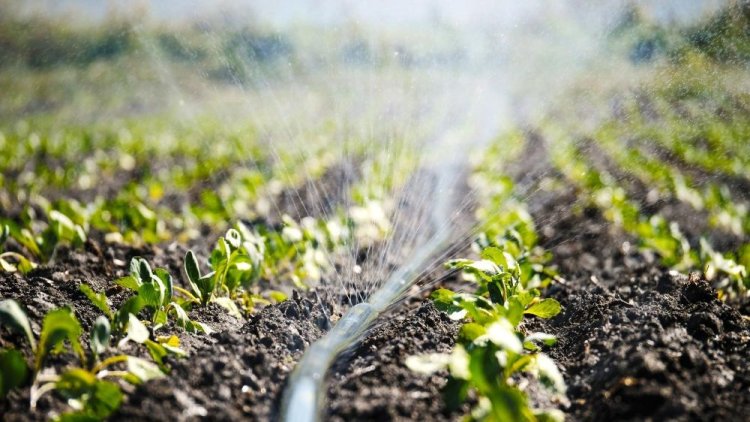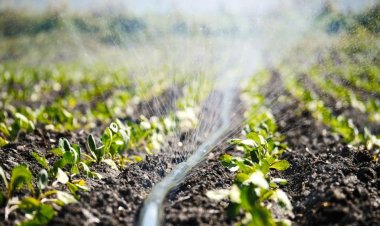Micro Irrigation Systems Market: Trends, Types, Regional Insights & Future Innovations (2025-2035)
Explore the global micro irrigation systems market, including current trends, types, regional analysis, key players, and future innovations. Discover how micro irrigation is transforming agriculture worldwide.

Key Takeaways
- The global micro irrigation systems market was valued at USD 10,260.17 million in 2022 and is projected to reach USD 20,444.05 million by 2030, growing at a CAGR of 9.00%.
- Drip irrigation systems dominate the market, followed by sprinkler systems, each with unique advantages for different crops and environments.
- Orchard crops and greenhouse cultivation are major application segments, reflecting a shift towards high-value and protected agriculture.
- Asia Pacific leads in market share and growth potential, while North America maintains steady trends due to established infrastructure.
- Key players are focusing on technological innovations, automation, and sustainability to gain a competitive edge.
- Future trends include the integration of fertigation, automation, and advanced water conservation techniques.
Current Market Overview
The Global Micro Irrigation Systems Market has witnessed remarkable growth over the past decade, driven by the increasing need for efficient water management in agriculture. According to Vantage Market Research, the market was valued at USD 10,260.17 million in 2022 and is expected to nearly double, reaching USD 20,444.05 million by 2030. This robust growth, at a compound annual growth rate (CAGR) of 9.00%, underscores the critical role micro irrigation plays in addressing water scarcity, improving crop yields, and supporting sustainable agriculture.
Several factors are fueling this expansion. First, the growing global population and rising food demand are pressuring farmers to maximize productivity on limited arable land. Micro irrigation systems, which deliver water directly to plant roots with minimal waste, are increasingly seen as essential tools for achieving higher yields with less water. Second, climate change and erratic rainfall patterns have made traditional irrigation methods less reliable, prompting a shift towards more precise and efficient solutions. Government initiatives and subsidies in many countries, particularly in water-stressed regions, are also encouraging the adoption of micro irrigation technologies.
However, the market faces challenges. High initial investment costs and the need for technical know-how can be barriers, especially for smallholder farmers in developing regions. Maintenance and operational complexities, such as clogging of emitters and the need for regular monitoring, also pose hurdles. Despite these challenges, ongoing advancements in system design, automation, and affordability are gradually overcoming these obstacles, paving the way for broader adoption.
Looking ahead, the market is poised for continued growth, driven by technological innovation, increasing awareness of water conservation, and supportive government policies. As the world grapples with the dual challenges of food security and water scarcity, micro irrigation systems are set to play an increasingly vital role in the future of agriculture.
Types of Micro Irrigation Systems
Micro irrigation encompasses a range of technologies designed to deliver water efficiently to crops. The two most prominent types are drip irrigation and sprinkler irrigation, each with distinct characteristics and applications.
Drip irrigation systems have emerged as the dominant segment in the micro irrigation market. These systems deliver water directly to the root zone of plants through a network of valves, pipes, tubing, and emitters. The precision of drip irrigation minimizes water loss due to evaporation and runoff, making it highly efficient—often achieving water savings of up to 50% compared to traditional methods. Drip systems are particularly well-suited for row crops, orchards, vineyards, and greenhouse cultivation, where targeted watering is essential for optimal growth. The ability to integrate fertigation (the application of fertilizers through the irrigation system) further enhances crop productivity and resource efficiency.
Sprinkler irrigation systems represent the second major category. These systems simulate natural rainfall by distributing water through a network of pipes and sprinklers. Sprinkler systems are versatile and can be used for a wide range of crops, including cereals, vegetables, and lawns. They are especially useful in areas with uneven terrain or where soil infiltration rates are low. While not as water-efficient as drip systems, modern sprinkler technologies have improved significantly, offering better control over water distribution and reduced energy consumption.
When comparing the effectiveness of these systems, drip irrigation generally offers superior water use efficiency and is preferred for high-value crops and water-scarce regions. Sprinkler systems, on the other hand, are favored for their flexibility and ease of installation, particularly in large-scale field crops. The choice between the two often depends on crop type, soil conditions, climate, and economic considerations.
Other micro irrigation technologies, such as micro-sprayers, bubblers, and subsurface drip systems, are also gaining traction for specialized applications. These systems offer tailored solutions for specific crop needs and environmental conditions, further expanding the versatility of micro irrigation.
Agriculture Segment Insights
The adoption of micro irrigation systems is transforming agricultural practices across the globe, with significant implications for crop selection, productivity, and resource management. Among the various segments, orchard crops and high-value horticultural crops have emerged as the largest beneficiaries of micro irrigation technologies.
Orchard crops—such as citrus, grapes, apples, and olives—require precise and consistent moisture levels for optimal growth and fruit quality. Drip irrigation systems are particularly well-suited for these crops, as they deliver water directly to the root zone, reducing water stress and promoting uniform development. The ability to combine irrigation with fertigation allows growers to supply nutrients in a controlled manner, further enhancing yield and quality. As a result, the adoption of micro irrigation in orchards has surged, especially in regions facing water scarcity.
Greenhouse cultivation is another area experiencing rapid growth in micro irrigation adoption. Greenhouses provide a controlled environment for high-value crops such as tomatoes, cucumbers, peppers, and flowers. Micro irrigation systems, particularly drip and micro-sprayer technologies, enable precise water and nutrient delivery, supporting intensive production and reducing resource wastage. The shift towards greenhouse cultivation is driven by the need to maximize productivity on limited land, protect crops from adverse weather, and meet the growing demand for fresh produce year-round.
Field crops, including cereals, pulses, and oilseeds, are also increasingly adopting micro irrigation, albeit at a slower pace. The scalability of sprinkler systems makes them suitable for large fields, while advancements in drip technology are making it more accessible for row crops. Government incentives and awareness campaigns are playing a crucial role in promoting micro irrigation among smallholder farmers, particularly in developing countries.
Overall, the agriculture segment is witnessing a paradigm shift towards precision irrigation, driven by the need to optimize resource use, enhance crop yields, and ensure sustainability. As micro irrigation technologies become more affordable and user-friendly, their adoption is expected to expand across a broader range of crops and farming systems.
Regional Market Analysis
The global micro irrigation systems market exhibits significant regional variation, reflecting differences in agricultural practices, water availability, government policies, and economic development. Asia Pacific stands out as the leading region in terms of market share and growth potential, followed by North America, Europe, Latin America, and the Middle East & Africa.
Asia Pacific is the fastest-growing and largest market for micro irrigation systems, driven by countries such as India, China, and Australia. The region faces acute water scarcity and a rapidly growing population, making efficient irrigation essential for food security. Government initiatives, such as India’s Pradhan Mantri Krishi Sinchayee Yojana (PMKSY), provide subsidies and technical support to promote micro irrigation adoption among farmers. China’s focus on modernizing agriculture and improving water use efficiency further boosts market growth. The presence of large agricultural areas, diverse crop types, and increasing awareness of water conservation are key factors propelling the market in this region.
North America maintains steady market trends, with the United States and Canada leading in adoption rates. The region benefits from advanced agricultural infrastructure, high awareness of sustainable practices, and significant investments in research and development. The prevalence of large-scale commercial farming and the need to comply with environmental regulations drive the adoption of micro irrigation systems. While growth rates are moderate compared to Asia Pacific, the market remains robust due to ongoing technological innovation and the replacement of aging irrigation infrastructure.
Europe is characterized by a strong emphasis on sustainability and environmental protection. Countries such as Spain, Italy, and France have adopted micro irrigation extensively in vineyards, orchards, and horticultural crops. The European Union’s Common Agricultural Policy (CAP) supports the adoption of water-efficient technologies, further stimulating market growth.
Latin America and the Middle East & Africa are emerging markets with significant growth potential. In Latin America, countries like Brazil and Mexico are investing in modern irrigation systems to boost agricultural productivity and export competitiveness. The Middle East & Africa, facing severe water scarcity, are increasingly turning to micro irrigation as a solution for sustainable agriculture.
In summary, while Asia Pacific leads in market share and growth, other regions are also making significant strides, driven by local needs and policy support. The global nature of the micro irrigation market underscores its importance in addressing the universal challenges of water scarcity and food security.
Competitive Landscape
The micro irrigation systems market is highly competitive, with a mix of global giants and regional players vying for market share. Key players include Netafim Limited, Jain Irrigation Systems Ltd., The Toro Company, Rain Bird Corporation, Hunter Industries, and Lindsay Corporation, among others. These companies collectively account for a significant portion of the market, leveraging their extensive product portfolios, global distribution networks, and strong brand recognition.
Netafim Limited, a pioneer in drip irrigation technology, holds a leading position in the market. The company’s focus on innovation, sustainability, and customer-centric solutions has enabled it to maintain a competitive edge. Jain Irrigation Systems Ltd. is another major player, known for its comprehensive range of micro irrigation products and strong presence in emerging markets, particularly India and Africa.
The Toro Company and Rain Bird Corporation are prominent in the North American market, offering advanced sprinkler and drip irrigation solutions for both agriculture and landscaping. Hunter Industries and Lindsay Corporation are also key contributors, with a focus on automation and smart irrigation technologies.
Recent developments in the market include the introduction of smart irrigation systems that integrate sensors, IoT (Internet of Things), and data analytics to optimize water use. Companies are investing in R&D to develop products that are more efficient, user-friendly, and adaptable to diverse agricultural conditions. Strategic partnerships, mergers, and acquisitions are common, as companies seek to expand their market presence and technological capabilities.
Sustainability is a major focus, with leading players emphasizing water conservation, energy efficiency, and the use of recycled materials in product manufacturing. Customization and after-sales support are also key strategies, as companies aim to address the specific needs of different crops, regions, and farm sizes.
In conclusion, the competitive landscape of the micro irrigation systems market is dynamic and innovation-driven. Companies that can offer integrated, sustainable, and technologically advanced solutions are well-positioned to capitalize on the growing demand for efficient irrigation in agriculture.
Future Trends and Innovations
The future of the micro irrigation systems market is shaped by rapid technological advancements, increasing integration of automation and fertigation, and a strong emphasis on sustainability and water conservation.
Technological advancements are at the forefront, with the adoption of smart irrigation systems that utilize sensors, weather data, and real-time monitoring to optimize water delivery. These systems can automatically adjust irrigation schedules based on soil moisture, crop needs, and weather forecasts, reducing water waste and improving crop health. The integration of IoT and data analytics enables farmers to make informed decisions, enhance productivity, and reduce operational costs.
Fertigation—the application of fertilizers through irrigation systems—is becoming increasingly popular, allowing for precise nutrient management and improved crop yields. Automated fertigation systems can deliver the right amount of nutrients at the right time, minimizing environmental impact and maximizing resource efficiency.
Sustainability efforts are driving the development of eco-friendly products and practices. Companies are focusing on reducing the environmental footprint of their products by using recycled materials, improving energy efficiency, and promoting water conservation. The adoption of micro irrigation is recognized as a key strategy for achieving the United Nations Sustainable Development Goals (SDGs), particularly those related to clean water, food security, and climate action.
Water conservation initiatives are gaining momentum, with governments and NGOs promoting the adoption of micro irrigation in water-scarce regions. Public-private partnerships, financial incentives, and capacity-building programs are helping to overcome barriers to adoption and ensure the long-term sustainability of agricultural production.
Looking ahead, the market is expected to witness continued innovation, with the development of more affordable, user-friendly, and adaptable systems. The integration of artificial intelligence, machine learning, and blockchain technology holds promise for further enhancing the efficiency and transparency of micro irrigation systems.
In summary, the future of micro irrigation is bright, with technology, sustainability, and resource efficiency at its core. As the world faces increasing challenges related to water scarcity and food security, micro irrigation systems will play a pivotal role in shaping the future of agriculture.
☎ Contact Us:
224 W 35th St Ste 500 New York,
USA/Canada Toll Free +1(877) 462-2282
+1(212) 951-1369
✉ Email: [email protected]
???? Website: https://www.vantagemarketresearch.com
FAQs
- What is the current valuation of the Global Micro Irrigation Systems market?
- What factors are driving the growth of the Micro Irrigation Systems market?
- How is artificial intelligence influencing the Micro Irrigation Systems industry?
- What is the projected market value of Micro Irrigation Systems by 2035?


















